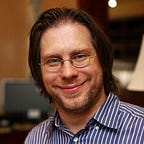Why calls for “free speech” aren’t the same
A recent meme favored by the Right (and often echoed by centrists) is that the Left is calling for restrictions on free speech, which runs against basic American norms. The Right simply says that their own speech is being suppressed; the center-left warns that calls for speech suppression will always be turned against the Left.
But these warnings miss a very important point: speech already isn’t free, and it isn’t free in a way that is very content-selective. Consider these two article snippets identified by Emily Gorcenski, from a single article about the most recent round of Nazi protests in Charlottesville:
Speech restrictions have always been enforced in the US, and not in a content-neutral way: speech perceived as threatening to those in power, such as calling for checks on police brutality, has been met with force, while speech perceived as acceptable to those in power has proceeded freely.
Protests against entrenched power are always considered to be “violent,” even if they consist of nothing more than standing silently, and with a certain reason: they are calls to change the social order, and changes to the social order which might involve rank-reversal — those previously above now being below — are fundamentally frightening.
Right-wing protest, by definition, is a call to strengthen existing systems, and give more power to those already in power; left-wing protest is a call to change or upend existing systems. As a result, it will never be seen as peaceful.
In fact, this leads to a simple rule by which protests can be understood: observe the police response. Police are always closely connected to existing systems of power; their fundamental role is to preserve “public order,” including social order. If the police are friendly or permissive, this is a sign that those in power do not see the protesters’ demands as threatening; if they are threatening or aggressive, they see these demands as something which fundamentally threatens social order.
That this is independent of protesters’ tactics or behavior is particularly telling. The protests in Ferguson after the killing of Michael Brown started out as candlelight vigils, but were immediately portrayed as dangerous riots, and met with riot gear, kettling, and tear gas; the protests of white nationalists calling for racial purification, or even the armed siege of a government compound by fanatics supported by right-wing commentators, are treated as things best ignored.
(The public and police response the 2017 Women’s March is therefore quite interesting; what does it tell us about that march’s politics that it was met with such a positive reaction from the police?)
In this context, calls to restrict hate speech need to be understood not as calls to reduce freedom of speech across the board, but as calls for uniformity in speech law. Speech can be restricted by a number of factors, with explicit government intervention being only one: threats of violence, harassment, and the like are methods by which one group can use their speech to suppress that of another. If these actions are tied to existing power structures, as they frequently are, then they lead to different costs for different types of speech: for example, the effect on the career of a woman, or a person of color, being publicly described as an “unstable threat” is quite different from the effect on a white man, simply because their position in their jobs is far more likely to be tenuous to begin with.
All of these things impose costs on speech, and in so doing, restrict speech to those most able to pay those costs.
If the objective of speech law and policy is to maximize the freedom of the marketplace of ideas — which I very much believe it should be — then it must recognize these nonuniformities. The “zero-regulation point” is not the point which maximizes freedom of speech; it’s the point which maximizes freedom of speech for those who can speak with relatively little consequence. And as we saw above, that is not the point where we live today: speech favorable to those in power may be close to First Amendment protection, but speech viewed as subversive to the social order is subject to significant costs.
In short, the current state of speech law and policy — and by “policy” I include everything from the policies of private individuals and organizations to the de facto policies of police departments, cities, and states — far from maximizing the freedom of speech, maximizes freedom of speech which supports those in power, and places substantial costs and limits on speech which opposes that.
The only way to create policy which truly maximizes the freedom of expression is to recognize the existence of these costs, whether imposed by state actors or by private individuals, and cautiously create an equilibrium.
